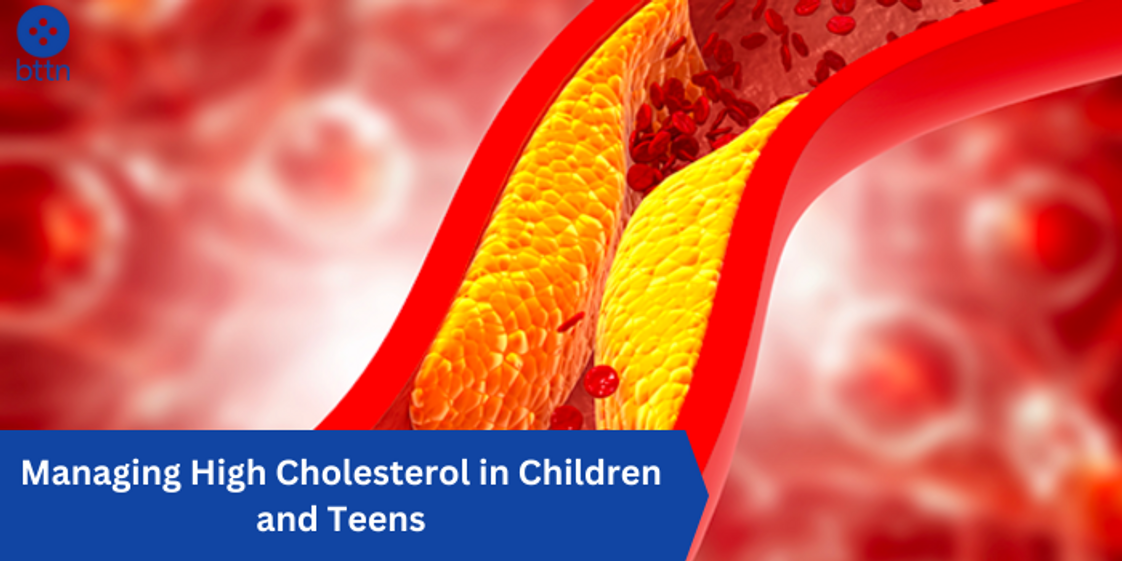
Managing High Cholesterol in Children and Teens
Posted by Pankaj Dhiman on Nov 15th 2023
Managing High Cholesterol in Children and Teens: Causes, Symptoms, and Treatments
In a world where fast food and sedentary lifestyles are on the rise, the concern over high cholesterol is not limited to adults. Children and teens are increasingly falling prey to this health issue, raising questions about the causes, symptoms, and treatments. In this blog, we'll delve into the world of high cholesterol in the younger demographic, addressing crucial aspects like what cholesterol is, the causes of high cholesterol in children and teens, symptoms to look out for, how to identify the condition, and the available treatments.
Check out - Shop At Home Medical Test Kits: Top 10 Products
What is Cholesterol?
Cholesterol is often perceived as the villain in the health narrative, but it's crucial for the body's functioning. It's a waxy, fat-like substance found in every cell, necessary for producing hormones, vitamin D, and substances to help digest food. However, an excess of cholesterol can lead to health problems, even in children and teens.
What Causes High Cholesterol in Children and Teens?
Several factors contribute to high cholesterol in the younger population. Genetics play a significant role, as children with a family history of high cholesterol are more prone to the condition. Unhealthy lifestyle choices, such as a diet rich in saturated and trans fats, lack of physical activity, and obesity, are also key culprits.
Must Read - Chest Injuries: Symptoms, Causes and Treatments
What are the Symptoms of High Cholesterol in Children and Teens?
Unlike adults, children and teens with high cholesterol levels may not exhibit obvious symptoms. This silent nature of the condition emphasizes the importance of regular check-ups and screenings. In some cases, visible symptoms might include skin lesions or bumps, a condition known as xanthomas, which can be indicative of underlying cholesterol issues.
How Do I Know If My Child or Teen Has High Cholesterol?
Routine screenings and blood tests are the primary methods for identifying high cholesterol in children and teens. The American Academy of Pediatrics recommends cholesterol screening for all children between the ages of 9 and 11 and again between 17 and 21. However, if there's a family history of early heart disease or high cholesterol, screening may start as early as age 2.
Must Read - Liver Transplant: Criteria, Surgery, Procedure & Recovery
What Are the Treatments for High Cholesterol in Children and Teens?
Addressing high cholesterol in the younger demographic involves a combination of lifestyle changes and, in some cases, medications. Lifestyle modifications include adopting a heart-healthy diet, engaging in regular physical activity, and maintaining a healthy weight. Medications are usually reserved for cases where lifestyle changes alone aren't sufficient or when the condition is more severe.
Diagnosis and Tests
The diagnosis of high cholesterol in children and teens involves a lipid panel blood test, measuring total cholesterol, low-density lipoprotein (LDL or "bad" cholesterol), high-density lipoprotein (HDL or "good" cholesterol), and triglycerides. Interpretation of these values is crucial in determining the appropriate course of action.
Must Read - Vitamin D Deficiency: Causes, Symptoms, and Treatment
Treatments and Therapies
Treatment approaches vary based on the severity of the condition. Lifestyle modifications, including dietary changes and increased physical activity, form the foundation of management. In cases where lifestyle changes are insufficient, or if there are other risk factors, medication may be prescribed. Statins, commonly used in adults, are not the first choice for children and teens but may be considered in certain situations.
FAQs:
Q1: Can children and teens really have high cholesterol?
Yes, they can. Genetics, unhealthy diets, and sedentary lifestyles contribute to high cholesterol in the younger population.
Q2: Are there any visible symptoms of high cholesterol in children and teens?
While symptoms may not be obvious, skin lesions or bumps called xanthomas can sometimes be indicative of underlying cholesterol issues.
Q3: How is high cholesterol diagnosed in children and teens?
A lipid panel blood test is conducted, measuring total cholesterol, LDL, HDL, and triglycerides.
Q4: What can parents do to help manage their child's high cholesterol?
Encourage a heart-healthy diet, regular physical activity, and maintaining a healthy weight. Follow medical advice closely.

